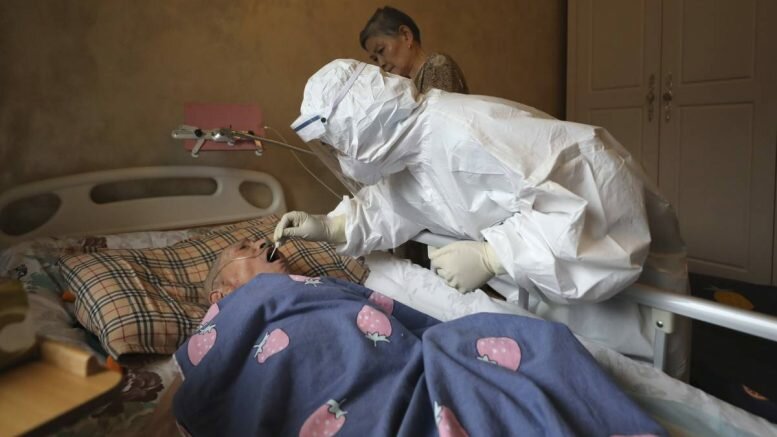On Monday, one year passed since the world’s first known COVID-19 death in Wuhan, China. But little is still known about where the deadly virus actually came from.
On January 11, 2020, China confirmed that a 61-year-old who regularly visited Wuhan’s animal market died after being infected with COVID-19.
That is the very first coronavirus-related death known to the world.
One year on and nearly two million deaths later, the pandemic is still out of control in large parts of the world, with tens of millions of people sick and a severely affected international economy.
Experts warn that we might never get clear answers as to where the coronavirus really came from.
China, which has largely gained control of the virus on its own soil, continues to stand in the way of independent attempts to find the virus’s origin.
COVID-19
There is little disagreement that the virus had its first known outbreak among humans in the Chinese city of Wuhan, in connection with a so-called wet market, where live animals are sold as food.
It is also believed that the virus came from a bat species. However, the tracks stop there, and the search for the origin of the virus is made more complex by several clues that may indicate that the virus was in circulation even before the Wuhan outbreak.
Furthermore, several conspiracy theories promote the notion that the virus was released from a laboratory in China.
Tracing the source of the virus is important to stop future outbreaks early, according to leading virologists.
By knowing more about the source, we could get information that could be useful when it comes to decisions about whether to mass slaughter animal populations, put infected people in quarantine, or limit hunting and other situations where people come into contact with animals.
“If we can find out why the viruses continue to appear, we can reduce the underlying drivers,” Peter Daszak, president of EcoHealth, an international organization that works with infection control, noted.
Changing explanations
At the beginning of the pandemic, China was praised for quickly reporting the outbreak and early mapping of the virus’s DNA, in contrast to the situation during the SARS outbreak in 2002–03.
But China’s handling has also been marked by secrecy and changing explanations.
In Wuhan, authorities initially tried to cover up the outbreak, denying that the virus was transmitted between people during the important initial weeks.
Chinese officials determined early on that the outbreak began in a market in Wuhan.
But data from January 2020 show that several of the first cases had no known links to the market, which indicates a source elsewhere.
The story was also changed in March, when the head of the Chinese Institute of Public Health, Gao Fu, said that the market was not the source, but instead a “victim,” a place where the disease only developed further.
Experts not allowed in
According to experts, China has been frugal in sharing information about samples taken from animals and the environment on the market in Wuhan, which could have been useful for researchers.
China has also kept foreign experts at arm’s length, but on Monday, it was announced that a team of experts from the World Health Organization (WHO) would arrive in the country on Thursday.
However, it is still unclear whether the experts will be allowed to visit Wuhan.
Epidemiologist Daniel Lucey at Georgetown University in the USA works on tracking and following global outbreaks.
He believes that the market in Wuhan may not be so important. He points out that the virus already spread rapidly in Wuhan in December 2019, which might mean that it actually circulated much earlier, as it can take months – perhaps even years – before a virus develops the right mutations to become highly contagious in humans.
He believes that the theory that the market was the very origin of the virus is not plausible.
“The virus appeared naturally, and it must have happened many months earlier, maybe a year, maybe more than a year,” he said.
His doubts are reinforced by the fact that China stated in December that the number of coronavirus cases that circulated in Wuhan early in the pandemic might have been ten times as high as what was reported through the official figures at the time.
Confusion has also been created through findings that may indicate that the virus was present in Europe and Brazil before the outbreak in Wuhan.
Renewed tracing efforts
Daszak still believes that the origins of the virus can be identified, especially after Donald Trump lost the US presidential election.
He blames Trump for destroying cooperation with China by politicizing the issue – also by calling it the Chinese virus – and promoting the conspiracy theory that China made the virus in a laboratory, which scientists have rejected.
“I am confident that we will eventually find the bat species the virus comes from,” Daszak said.
Source: © NTB Scanpix / #Norway Today / #NorwayTodayNews
Do you have a news tip for Norway Today? We want to hear it. Get in touch at [email protected]





Be the first to comment on "One year after the world’s first corona-related death, the origin of the virus remains unknown"